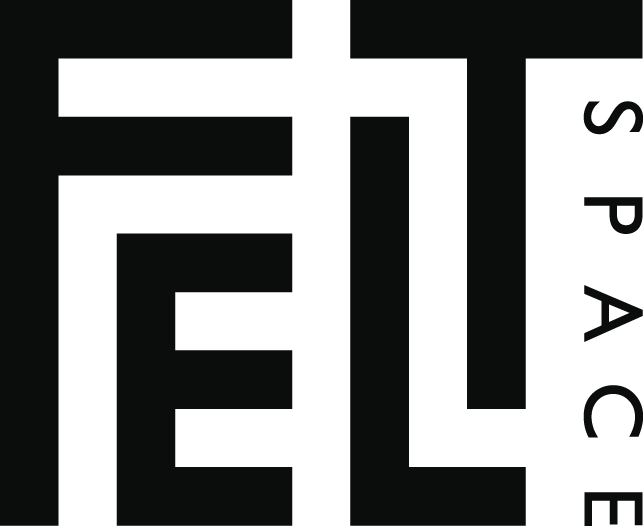A response to the June exhibitions at FELTspace on Kaurna Yarta from one hour and thirty minutes in the past (AWST), after Zoom conversations with some (but not all) of the exhibiting artists, which is entirely my own fault (sorry Andrew Ananda Voogel).
We cannot reflect on Seiichi Kobayashi’s show Space and Improvisation (or really, anything at all) without referring to the context of the current global pandemic.
The emergence of COVID-19 last year meant that this exhibition, originally planned for 2020, was postponed, and the artist had to return to his home country of Japan where he remains today. Seiichi subsequently set up a home studio in his shared accommodation, created these new works, and then posted them back to FELTspace in time for his June opening.
As Riley O’Keeffe points out in his eloquent exhibition essay, Seiichi uses the same physical elements as traditional Western painting – but with the introduction of computer-generated content.
His practice involves programming code to create patterns, which are then screen-printed onto mounted canvas or paper using oil paint instead of ink. As the oil paint is pushed through the fine mesh of the screen, the integrity of the digital image becomes subject to the vagaries of the thick paint, how it sits and settles onto the paper and board.
Subtle levels of the unexpected seem to be welcomed by Seiichi throughout this process, from the results of adjusting digital variables in his code to the unique finishes produced by the silk-screened paint. He’s coding tangible textures, hand-crafted translations of programmed patterns, where the paint plays a role in creating the glitch.
In any case, the history of this exhibition is true to its title – considering the different types of space (domestic, studio, negative, geographic) and improvisation (inherent to Seiichi’s artistic process, and seen in the urgent need to adapt his practice) involved.
And since they’ve been photographed, Seiichi’s works have now become pixels once more, allowing me to experience them via my computer screen from Goomburrup (Bunbury, Western Australia).
Jesse Budel’s sound installation Crepuscule, found in the darkened back gallery of FELTspace, was built of audio streamed from a global network of open microphones at the particular moment of twilight.
In the vein of Reveil, an online event broadcasting live audio streams from across the world at dawn, Jesse combines the accumulated sounds of dusk – which are further mediated by meteorological data from the same locations.
Of course, as this work is not available online, I’m just writing out my understanding of the concept (i.e. ‘here’s my beginner’s take on a contemplative aural installation I haven’t actually experienced’). And this combination of sounds and space will never be presented in the exact same format again (is FOMO still a thing?).
Jesse and Seiichi’s works can be linked conceptually through the idea of artistic control – a timely topic, as control over our lives (or at least the illusion of it) seems to have been stripped away from us in these current circumstances. Both artists could be seen to be collating materials over which they have ceded some control.
They set the boundaries – Seiichi decides the variables that will generate his coded patterns, Jesse chooses the audio effects he will assign to different weather conditions – and then gently explore what emerges, in collaboration with the outside forces at work (the program, the ambient noises, the movement of paint and the strength of the wind).
As recent history proves, we cannot completely control our external circumstances but we can control our expectations – and in our Zoom chats, both artists noted different expectations they had confronted during this exhibition run.
Jesse notes that some gallery visitors seemed confounded by the lack of the visual in the darkened space, a purposeful decision to encourage sensory focus on the sound elements.
Seiichi worried his exhibition, so radically changed from his initial plans, might seem ‘boring’.
(And in applying for the FELTspace writer’s program in early February 2020, I imagined myself swanning into the eventual opening night, ‘why yes, I am the writer, I just flew in…’)
During these unexpected times, it’s useful to reflect on our personal sphere of control, a concept that I struggle with on the regular (‘grant me the serenity to accept the things I cannot change, etc. etc.’).
Perhaps we all need to work to accept the nature of this moment in time – set some boundaries, gather things from the world, see what emerges – reflecting on what we can take and how we can use it, what we expect and what we get.
